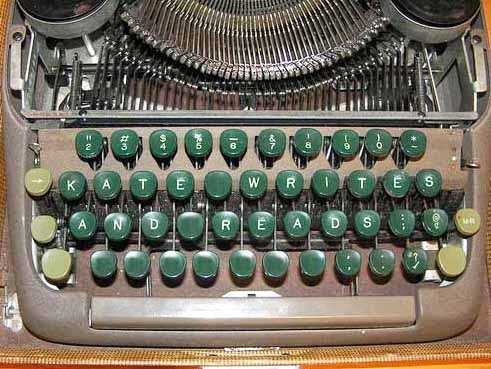In 2008, as a member of Edinburgh Writers’ Club, I was
entitled to go to the conference of the Scottish Association of Writers’
Conference. One of their competitions that year was to write the first
instalment (7000 words) of a serial for The People’s Friend.
At that time, once a month, I met up with four writing
friends and we took turns to provide a prompt or an exercise from which we
would write for twenty minutes or so and then read our work aloud. One month
our hostess, Vicki (now acclaimed novelist Victoria Hendry), handed out some
paperbacks of various genres and asked us to select a page at random, look at
the first line and use that to start our own piece. I can’t remember the title
of my book but it was a horror story; the line I picked out was about a woman driving
in the rain. I decided she was travelling up to the very north-west of Scotland
and (although I don’t even read horror never mind write it) I vaguely had in
mind that she was on her way to some pagan ceremony which would end badly. I
called the scribbled piece The Stone Mother without having any idea what that
meant.
When I read about The
People’s Friend competition I thought of that piece of writing and how I
might take it further. My heart had never been in pursuing the pagan ceremony idea
and of course The People’s Friend
doesn’t do horror … So the woman in the car with her windscreen wipers working
overtime became an archaeologist en route to join a Viking dig and I came up
with a cast of characters for the community she was going to be living in.
(If anyone wants to take up The Stone Mother and go off to a
horrorific pagan ceremony be my guest.)
No one was more surprised than me when I won the
competition. I had not thought beyond that first instalment and it was both
thrilling and frightening to realise I had a commission to finish the serial. But
before it could be taken any further The
People’s Friend wanted some changes – some scenes swapped around, there
were too many single people, one character was over-the-top … and I had to produce
a complete synopsis of the rest (five or six instalments of 5000 words each).
I’d had some short stories published before but had never written anything of
length so this seemed an impossible task – like going into a dark room full of
people I’d never met and being expected to know them. It took me weeks.
At one point I really thought I
couldn’t do it and had to give myself a severe talking to; it would have
been so stupid not to grasp the opportunity offered to me. Eventually I produced an A4 page
for each of the next six instalments, broken down into five chapters/scenes and
once that was all approved I was off – and it was great, rather like joining
the dots. I had a blueprint in front of me to follow.
I submitted the second instalment, waiting for their
approval/comments before beginning the next one. It was quite a long process
but at last The Family at Farrshore
was published in The People’s Friend
in 2011 and then I sold the large-print library rights to Linford Romance
Library (an imprint of Ulverscroft).
Cathryn is delighted
to join an archaeological dig at Farrshore, in the Scottish Highlands. Apart
from her professional interest, it means she’ll be at a distance from her
recently ex-boyfriend, Daniel. Canadian Magnus Macaskill, is in Farrshore for
his own reasons, one of which is to trace his ancestry. As they spend the
summer lodging with the MacLeod family, Cathryn and Magnus are drawn into the
small community and to each other. But how will Cathryn react when Daniel
reappears?
In 2013 The PF’s
Fiction Editor Shirley Blair asked me if I had any other ideas for a serial (I
don’t know why it hadn’t occurred to myself to start another one). I gave her
two suggestions and she went for one with a hotel setting. This time she didn’t ask
for the full synopsis but she queried the timeline I was proposing so I did
do a plan to show her how it would work. It can be tricky – you send off an
instalment and in the weeks before you get a reply your head is in another
story and then you have to reacquaint yourself with your serial characters – but I
did find it easier the second time round. The Ferryboat began last week (23 August 2014), the first of six
instalments.
It’s about an English couple who move up to the west
highlands of Scotland (to Lorn, a fictional place but in my head it’s near
Oban) after buying a run-down hotel with their daughter and her chef husband.
It’s a time of change there because a new bridge is about to replace the
age-old ferry service; not everyone likes the changes the new hotel owners make.
I’ve sent another serial idea for Shirley to consider …
watch this space.






